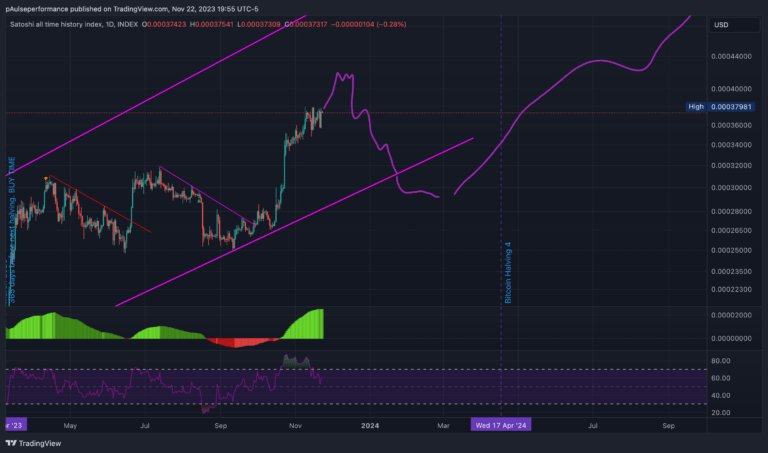The Quiz is free to take and does not require registration. Unless you want to access your personalized trader profile, save your quiz results, retake the quiz, and unlock valuable trading tips based on your profile, please either register or log in.
Trader Risk Tolerance Assessment

Welcome to the Trader Risk Tolerance Assessment.
This quiz is your gateway to better trading decisions. In just a few minutes, you’ll uncover your risk tolerance profile, a critical aspect of trading psychology.
Why take this quiz?
- Understand your risk tolerance, a fundamental element of trading.
- Make more informed trading decisions tailored to your risk profile.
- Assess your comfort level with risk, from novice to experienced traders.
Duration:
- It will take only a few minutes to complete this assessment.
Outcome:
- Discover your unique risk tolerance profile.
- Gain insights to guide your trading strategies and risk management.
By taking this quiz, you’ll embark on a journey to better trading, starting with a deeper understanding of your own risk tolerance.
Instructions:
- Choose the response that best reflects your feelings and preferences.
- Answer all questions.
Quiz Summary
0 of 11 Questions completed
Questions:
Information
You have already completed the quiz before. Hence you can not start it again.
Quiz is loading…
You must sign in or sign up to start the quiz.
You must first complete the following:
Results
Results
Your time:
Time has elapsed
Categories
- Not categorized 0%
- Psychology 0%
-
Conservative Trader (Low Risk Tolerance):

You have a low risk tolerance, preferring to protect your capital at all costs.
You tend to avoid substantial losses and may be more risk-averse in your trading approach.
Consider strategies that prioritize capital preservation and risk management.
Here’s some things to keep track of according to your risk profile:
-
Capital Preservation: Prioritize the preservation of your capital. Use tight stop-loss orders and diversify your investments to minimize losses.
-
Risk Management: Implement conservative risk management strategies. Limit your position sizes and avoid high leverage.
-
Long-Term Investments: Consider long-term investments and value-based strategies. Avoid high-frequency trading and focus on fundamental analysis.
-
Education: Continue to educate yourself about financial markets and trading strategies to make informed decisions.
-
Patience: Be patient and avoid impulsive trading. Wait for clear signals and trends.
These particular strategies suit your risk profile the best:
-
Buy and Hold: Invest in well-established assets for the long term, focusing on stability and capital preservation.
-
Income Investing: Explore dividend stocks, bonds, or real estate investment trusts (REITs) for consistent income.
-
Value Investing: Look for undervalued assets with strong fundamentals and long-term growth potential.
-
Trend Following: Use trend-following strategies with a cautious approach to minimize risk.
Please note that this is a general assessment, and individual circumstances, goals, and strategies may vary. Your risk tolerance profile should serve as a starting point for understanding your comfort level with trading risks. It’s important to incorporate risk management and align your trading strategy with your risk tolerance.
-
-
Moderate Trader (Moderate Risk Tolerance):

You have a moderate risk tolerance and are willing to tolerate some losses in pursuit of potential gains.
Your approach balances risk and reward, and you’re comfortable with moderate fluctuations in your portfolio.
You may explore a range of trading strategies.
Here’s some things to keep track of according to your risk profile:
-
Balanced Approach: Maintain a balanced approach to risk and reward. Opt for a diversified portfolio that includes both conservative and growth assets.
-
Risk Management: Use moderate risk management techniques, such as setting stop-loss orders and managing your position sizes effectively.
-
Technical and Fundamental Analysis: Combine technical and fundamental analysis for well-rounded decision-making.
-
Continuous Learning: Stay updated with market trends and new trading strategies. Regularly review and refine your approach.
-
Discipline: Maintain discipline in executing your trading plan and avoid emotional decision-making.
These particular strategies suit your risk profile the best:
-
Diversified Portfolio: Build a diversified portfolio with a mix of stocks, bonds, and alternative investments.
-
Balanced Funds: Consider balanced mutual funds or exchange-traded funds (ETFs) that combine stocks and bonds.
-
Swing Trading: Engage in swing trading, taking advantage of short to medium-term price swings.
-
Options Trading: Explore options strategies, such as covered calls or protective puts, to manage risk.
Please note that this is a general assessment, and individual circumstances, goals, and strategies may vary. Your risk tolerance profile should serve as a starting point for understanding your comfort level with trading risks. It’s important to incorporate risk management and align your trading strategy with your risk tolerance.
-
-
Balanced Trader (Balanced Risk Tolerance):

You maintain a balanced risk tolerance, allowing you to navigate different trading environments.
You are open to a variety of strategies and are comfortable with both moderate risks and potential rewards.
Your approach may adapt to market conditions.
Here’s some things to keep track of according to your risk profile:
-
Diversification: Maintain a diversified portfolio across various asset classes and timeframes.
-
Risk-Return Balance: Continuously assess the risk-return balance in your portfolio and make necessary adjustments.
-
Adaptability: Be adaptable to different market conditions and trading strategies.
-
Advanced Analysis: Consider more advanced technical and fundamental analysis techniques.
-
Mental Resilience: Develop mental resilience to cope with the psychological challenges of trading.
These particular strategies suit your risk profile the best:
-
Core-Satellite Portfolio: Use a core-satellite approach, with a stable core and riskier satellite positions for growth.
-
Active Asset Allocation: Regularly adjust your asset allocation based on market conditions and your risk-return targets.
-
Volatility Trading: Consider strategies that profit from market volatility, such as straddles and strangles.
-
Advanced Technical Analysis: Dive into advanced technical analysis techniques, like Fibonacci retracement and Elliot Wave analysis.
Please note that this is a general assessment, and individual circumstances, goals, and strategies may vary. Your risk tolerance profile should serve as a starting point for understanding your comfort level with trading risks. It’s important to incorporate risk management and align your trading strategy with your risk tolerance.
-
-
Aggressive Trader (High Risk Tolerance):

You have a high risk tolerance, making you comfortable with taking substantial risks in your trading.
You prioritize potential rewards and may be more willing to endure significant fluctuations in your portfolio.
Explore high-risk, high-reward strategies with caution.
Here’s some things to keep track of according to your risk profile:
-
High-Reward Strategies: Explore high-risk, high-reward trading strategies, such as day trading and speculative investments.
-
Leverage: Use leverage carefully and sparingly. Understand the potential for amplified losses.
-
Advanced Analysis: Utilize advanced technical and fundamental analysis for precise decision-making.
-
Constant Monitoring: Be prepared to monitor markets continuously and act quickly when opportunities arise.
-
Risk Management: Implement aggressive risk management strategies to protect your capital.
These particular strategies suit your risk profile the best:
-
Day Trading: Engage in day trading, taking advantage of intraday price movements and fast-paced markets.
-
High-Frequency Trading: Explore high-frequency trading strategies that capitalize on small price differentials in rapid succession.
-
Options and Derivatives: Use complex options and derivatives strategies, such as iron condors and butterfly spreads.
-
Cryptocurrency Trading: Dive into cryptocurrency trading, where volatility and potential gains can be significant.
-
Leveraged ETFs: Trade leveraged ETFs that provide amplified returns, but also increased risk.
- Order Book Analysis: Monitor real-time order book data to make split-second trading decisions.
Please note that this is a general assessment, and individual circumstances, goals, and strategies may vary. Your risk tolerance profile should serve as a starting point for understanding your comfort level with trading risks. It’s important to incorporate risk management and align your trading strategy with your risk tolerance.
-
- 1
- 2
- 3
- 4
- 5
- 6
- 7
- 8
- 9
- 10
- 11
- Current
- Review
- Answered
- Correct
- Incorrect
-
Question 1 of 11
1. Question
When it comes to potential losses in trading, how do you feel?
-
Question 2 of 11
2. Question
How long are you willing to hold onto a losing trade before selling it?
-
A very short time A long time.
-
-
Question 3 of 11
3. Question
If you experience a series of losing trades, what is your initial reaction?
-
Question 4 of 11
4. Question
In general, how do you feel about taking calculated risks in trading?
-
Question 5 of 11
5. Question
How important is the preservation of your capital in trading?
-
Question 6 of 11
6. Question
Are you willing to invest a significant portion of your portfolio in a high-risk trade?
-
Question 7 of 11
7. Question
How do you feel about the idea of holding onto a losing trade for an extended period?
-
Question 8 of 11
8. Question
In the event of a market downturn, how do you typically react?
-
Question 9 of 11
9. Question
When assessing a trade, what’s more important to you?
-
Question 10 of 11
10. Question
How often do you check your portfolio during a trading day?
-
Question 11 of 11
11. Question
How would you rate your experience as a trader?
If you are Logged in the Quiz results will be saved to your Trader profile they can also be viewed in My Account under “Trader Profile”.
Be Careful. You may only take this assessment twice.


